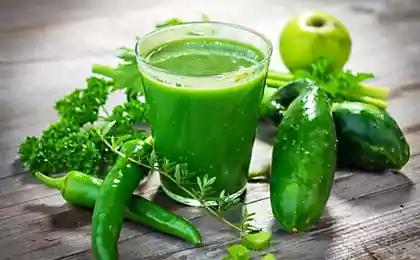523
Orange facts
Nineteen million two hundred sixty five thousand two hundred seventy three
Oranges are juicy sour-sweet and very tasty fruits. Bright peel employs a soft and juicy pulp. Seeded citrus fruit orange — Hospederia close to the berries. The fruit pulp of the orange consists of juice filled with fragments. Oranges grow in the tropics and subtropics. The juice of these fruits for its popularity is matched only by coffee, the harm of which there are many myths.
Eighty seven million six hundred sixty six thousand two hundred seven
Orange trees are low and reach a height of 5-8 meters. Oranges are seasonal fruits. The normal diameter of the orange is three inches. And the fruit weighs 100-150 grams. Orange blossoms are white in color and have a delicious aroma. They bloom in spring and fruits ripen only in the fall or even winter. Because tropical winter is Nasyrova. Resources Top Food Facts and Science Kids had made a very notable short stacks, allowing everyone to learn more about this popular fruit, the juice of which, the famous "fresh" — perhaps the only drink that is included in the diet of lovers of healthy food and a La carte fast food.
It is believed that oranges began to gather in East Asia for 4000 years before Christ. Then they were transported by travelers to Africa, and in Rome they began to grow over the last two centuries before Christ. In the tenth century met with them Arabs. The Portuguese had their particular variety of Portuguese oranges, which are considered, in 1493 Christopher Columbus brought to America on his second visit to the only open Europeans to the new continent. By 1820 the already excellent oranges grown in Saint Augustine, Florida. In 1873 the orange trees from Brazil began to grow in California riverside. One of these trees growing and fruiting until now.
It should be remembered that citrus a person can be allergic, so not all considered healthy foods to eat everyone.
Useful to know about orange best known for more than six hundred varieties. And now it's time to bring a selection of the most interesting facts about these superb fruits:
In Spain there are more than 35 million orange trees.
Orange juice is the most popular juice in America and the oranges are fourth most popular fruit.
The largest producer of oranges in the world is Brazil.
Florida oranges are greener than California. Hot nights Florida make the green pigment chlorophyll to move to the skin of the fruit and give it an appropriate shade.
Uncollected on time orange the fruit remaining on the trees, newly green in the process, which is called "re-greening" (re-greening). This effect has no negative impact on taste and nutritional value of oranges.
Oranges contain more fiber than most fruits and vegetables.
Oranges and orange flowers are considered symbols of love.
Although oranges are considered to be very useful in day should not eat more than three pieces.
Approximately 85% of all oranges are processed into juice.
Oranges contain high levels of vitamin C.
Orange trees are cultivated in agriculture, in the wild, their almost impossible to find.
Ideal conditions for growing oranges is Sunny weather and temperatures in the range from 15.5 to 29 degrees Celsius.
Orange peel used in horticulture. They throw in the vegetable beds to deter insects.
The nutritional properties of the orange are detailed on the pages of the website Self Nutrition Data and reflect those qualities for which all love useful and low-calorie orange. A glass of fresh orange juice will not refuse, even those who not want to hear about any calorie counting, which has been a lot of myths.
The nutritional properties of the fruit of one orange (131 grams)
In parentheses are the percentage of the daily allowance.
Energy value
Calories: 61.6 kcal (3%), including…
from carbohydrates: 56.1 kcal;
from fat: 1.3 kilocalories;
from protein: 4.1 kcal;
alcohol: 0,0 calories.
Carbohydrates
Total carbohydrates: 15.4 grams (5% of daily value), including…
fiber, part of the food: 3.1 grams (13% of the daily value);
starch: 0,0 gram;
sugars: 12.2 grams.
Fats and fatty acids
Total fat: 0.2 grams;
Saturated fat: 0.0 grams;
Monounsaturated fat: 0.0 grams;
Polyunsaturated fat: 0.0 grams;
Fatty acids omega-3 9.2 milligrams;
Fatty acids omega-6: 23.6 milligrams.
Proteins and amino acids
Protein: 1.2 grams.
Vitamins
vitamin A: 295 IU, IU, IU (6%);
vitamin C: 69.7 milligrams (116%);
vitamin E (alpha tocopherol) 0.2 milligrams (1%);
vitamin K: 0.0 micrograms (0%);
thiamine: 0.1 mg (8%);
Riboflavin: 0.1 mg (3%);
nicotinic acid: 0.4 mg (4%);
folate: 39.3 micrograms (10%);
vitamin B12: 0.0 micrograms (0%);
Pantothenic acid: 0.3 mg (3%);
vitamin B4 (choline): 11 milligrams.
Minerals
calcium: 52,4 milligrams (5%);
iron: 0,1 mg (1%);
magnesium: 13.1 milligrams (3%)
phosphorus: 18,3 mg (2%);
potassium: 237 mg (7%);
sodium: 0.0 milligrams (0%);
zinc: 0,1 mg (1%);
copper: 0.1 mg (3%);
manganese: 0,0 milligrams (2%);
Selena: 0.7 microgram (1%).
Sterols
cholesterol: 0.0 milligrams (0%).
Other
alcohol: a 0.0 grams;
water: 114 grams;
caffeine: 0,0 milligrams;
theobromine: 0,0 milligrams.
Eighty million four hundred nineteen thousand three hundred nineteen
Will favorite orange juice seem even tastier, if you know about its utility and low calorie?
Source: hi-news.ru
Oranges are juicy sour-sweet and very tasty fruits. Bright peel employs a soft and juicy pulp. Seeded citrus fruit orange — Hospederia close to the berries. The fruit pulp of the orange consists of juice filled with fragments. Oranges grow in the tropics and subtropics. The juice of these fruits for its popularity is matched only by coffee, the harm of which there are many myths.
Eighty seven million six hundred sixty six thousand two hundred seven
Orange trees are low and reach a height of 5-8 meters. Oranges are seasonal fruits. The normal diameter of the orange is three inches. And the fruit weighs 100-150 grams. Orange blossoms are white in color and have a delicious aroma. They bloom in spring and fruits ripen only in the fall or even winter. Because tropical winter is Nasyrova. Resources Top Food Facts and Science Kids had made a very notable short stacks, allowing everyone to learn more about this popular fruit, the juice of which, the famous "fresh" — perhaps the only drink that is included in the diet of lovers of healthy food and a La carte fast food.
It is believed that oranges began to gather in East Asia for 4000 years before Christ. Then they were transported by travelers to Africa, and in Rome they began to grow over the last two centuries before Christ. In the tenth century met with them Arabs. The Portuguese had their particular variety of Portuguese oranges, which are considered, in 1493 Christopher Columbus brought to America on his second visit to the only open Europeans to the new continent. By 1820 the already excellent oranges grown in Saint Augustine, Florida. In 1873 the orange trees from Brazil began to grow in California riverside. One of these trees growing and fruiting until now.
It should be remembered that citrus a person can be allergic, so not all considered healthy foods to eat everyone.
Useful to know about orange best known for more than six hundred varieties. And now it's time to bring a selection of the most interesting facts about these superb fruits:
In Spain there are more than 35 million orange trees.
Orange juice is the most popular juice in America and the oranges are fourth most popular fruit.
The largest producer of oranges in the world is Brazil.
Florida oranges are greener than California. Hot nights Florida make the green pigment chlorophyll to move to the skin of the fruit and give it an appropriate shade.
Uncollected on time orange the fruit remaining on the trees, newly green in the process, which is called "re-greening" (re-greening). This effect has no negative impact on taste and nutritional value of oranges.
Oranges contain more fiber than most fruits and vegetables.
Oranges and orange flowers are considered symbols of love.
Although oranges are considered to be very useful in day should not eat more than three pieces.
Approximately 85% of all oranges are processed into juice.
Oranges contain high levels of vitamin C.
Orange trees are cultivated in agriculture, in the wild, their almost impossible to find.
Ideal conditions for growing oranges is Sunny weather and temperatures in the range from 15.5 to 29 degrees Celsius.
Orange peel used in horticulture. They throw in the vegetable beds to deter insects.
The nutritional properties of the orange are detailed on the pages of the website Self Nutrition Data and reflect those qualities for which all love useful and low-calorie orange. A glass of fresh orange juice will not refuse, even those who not want to hear about any calorie counting, which has been a lot of myths.
The nutritional properties of the fruit of one orange (131 grams)

In parentheses are the percentage of the daily allowance.
Energy value
Calories: 61.6 kcal (3%), including…
from carbohydrates: 56.1 kcal;
from fat: 1.3 kilocalories;
from protein: 4.1 kcal;
alcohol: 0,0 calories.
Carbohydrates
Total carbohydrates: 15.4 grams (5% of daily value), including…
fiber, part of the food: 3.1 grams (13% of the daily value);
starch: 0,0 gram;
sugars: 12.2 grams.
Fats and fatty acids
Total fat: 0.2 grams;
Saturated fat: 0.0 grams;
Monounsaturated fat: 0.0 grams;
Polyunsaturated fat: 0.0 grams;
Fatty acids omega-3 9.2 milligrams;
Fatty acids omega-6: 23.6 milligrams.
Proteins and amino acids
Protein: 1.2 grams.
Vitamins
vitamin A: 295 IU, IU, IU (6%);
vitamin C: 69.7 milligrams (116%);
vitamin E (alpha tocopherol) 0.2 milligrams (1%);
vitamin K: 0.0 micrograms (0%);
thiamine: 0.1 mg (8%);
Riboflavin: 0.1 mg (3%);
nicotinic acid: 0.4 mg (4%);
folate: 39.3 micrograms (10%);
vitamin B12: 0.0 micrograms (0%);
Pantothenic acid: 0.3 mg (3%);
vitamin B4 (choline): 11 milligrams.
Minerals
calcium: 52,4 milligrams (5%);
iron: 0,1 mg (1%);
magnesium: 13.1 milligrams (3%)
phosphorus: 18,3 mg (2%);
potassium: 237 mg (7%);
sodium: 0.0 milligrams (0%);
zinc: 0,1 mg (1%);
copper: 0.1 mg (3%);
manganese: 0,0 milligrams (2%);
Selena: 0.7 microgram (1%).
Sterols
cholesterol: 0.0 milligrams (0%).
Other
alcohol: a 0.0 grams;
water: 114 grams;
caffeine: 0,0 milligrams;
theobromine: 0,0 milligrams.
Eighty million four hundred nineteen thousand three hundred nineteen
Will favorite orange juice seem even tastier, if you know about its utility and low calorie?
Source: hi-news.ru
New fast charging technology allows to use batteries for 20 years
How to create a beautiful back patio is 20 square meters























